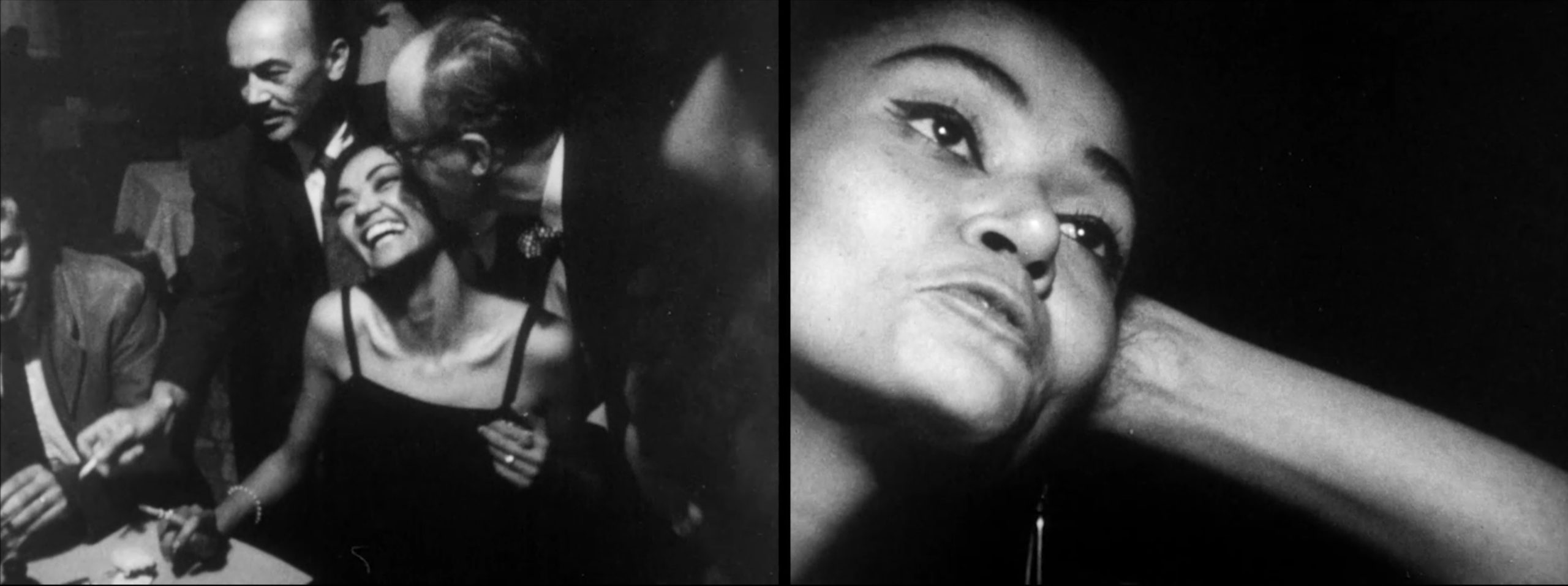
Origines
Media installation, 2021
Origines, is a two-channel media installation created from footage of Claude Jutra’s 1963 film À Tout Prendre (Take it All), one of the first Canadian films to feature an interracial relationship. It explores his then lover and film co-star Johanne Harrelle’s complicated quest for identity as a Black francophone woman in Canada. It takes two different versions of the Haitian folk song Choucoune, both sung by Harrelle, as the starting point of a reflection on Blackness and belonging as specifically experienced by Harrelle, but also in the broader context of the implicit whiteness of Canadian society.
Harrelle wasn’t Haitian at all. She was born in Montreal to an African-American father and a Québécois mother, but had claimed that identity in response to a society that refused to accept her. She learned to speak Creole and took on a false persona. This double identity followed her throughout part of her adult life. Newspaper articles published about her at that time alternately assigned her a Québécois or Haitian identity.
In the first part of the installation, the footage of Harrelle singing is set against images that illustrate the “exotic” personality that Harrelle adopted as a model, but also more generally in life. Forever aware of the gaze that is cast upon her, she projects the sexualized “other” posing for the camera or engaging in lively exchanges.
In the second part of the installation, Harrelle recounts her childhood as an orphan (her father died when she was young, and her mother was institutionalized when she fell ill), the impossibility of finding a family willing to adopt a Black child, and how she came to take on a Haitian identity. She ends her long monologue by saying that she thinks that “like the others,” Jutra will be disappointed because he only loves her because of her exoticism. This second part of the installation, in counterpoint to the signing in creole, negates the first, unravelling the narrative Harrelle wove to survive in the world.
The two channels are meant to be played opposite one another in a gallery space rather than side-by-side, avoiding the left/right hierarchy, and creating a tension for the viewer who must constantly choose which screen to focus on. The installation was produced as part of a residency at Library and Archives Canada through Archive/Counter-Archive and funded by the Social Sciences and Humanities Research Council.
